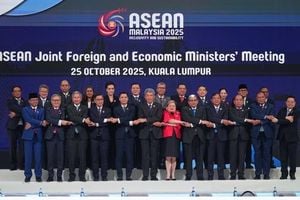Electricity is the lifeblood of modern society, facilitating everyday operations and enhancing quality of life. Yet, for many remote communities, access to reliable power remains elusive, often leaving them at the mercy of intermittent fossil fuel generators. A recent study published by researchers from various institutions sheds light on the potential of hybrid renewable energy systems (HRES) to address this pressing issue, particularly focusing on the Adrar region of southern Algeria.
The study presents the design and optimization of an autonomous hybrid microgrid capable of providing stable electricity to off-grid populations. Composed of photovoltaic (PV) modules, wind turbines, batteries, and diesel generators, this microgrid aims to mitigate the challenges associated with extended power outages. Given the debilitating effect of inconsistent energy supply, particularly within rural areas relying heavily on diesel fuel, the need for cleaner and more sustainable energy solutions has never been more urgent.
Using advanced methodologies, researchers evaluated the microgrid's performance based on four recent multi-objective optimization algorithms: Multi-objective Particle Swarm Optimization (MOPSO), Multi-objective Ant Lion Optimizer (MOALO), Multi-objective Dragonfly Algorithm (MODA), and Multi-objective Evolutionary Algorithm (MOGA). These algorithms seek to identify optimal PV and wind turbine sizes, battery capacity, and backup diesel generator output, aiming to minimize both the cost of electricity (COE) and the loss of power supply probability (LPSP).
The findings revealed exciting results. The MOPSO method, for example, achieved the lowest COE at $0.2520 per kilowatt-hour, along with very competitive LPSP at just 9.164%. This configuration demonstrates not only cost-effectiveness but also reliability, being able to provide smooth electricity supply even when renewable resources fluctuate.
A comparison of the four optimization techniques illustrated distinct strengths and weaknesses, with MOPSO leading in terms of overall performance. MOALO closely followed, exhibiting slightly higher costs but commendable reliability metrics. Meanwhile, MODA concentrated on increasing the role of wind turbines, resulting in differing cost structures, and MOGA, which showed promising configurations, leaned more heavily on wind resources.
The research team collected empirical data to inform their study, leveraging real-time solar radiation, wind speeds, and temperature readings from Zaouiet Kounta, Adrar. This quantitative grounding lends credence to the feasibility of the proposed hybrid microgrid, especially as Algeria grapples with energy deficits exacerbated by its geographical challenges and economic constraints.
Crucially, this study not only contributes to the existing body of knowledge on multi-objective optimization for energy systems but also serves as a practical addressal of the energy dilemma faced by isolated communities worldwide. The adaptability of hybrid systems makes them particularly well-suited for rural electrification—enabling reliance on abundant local renewable sources instead of diminishing fossil fuels, which are often costly and unsustainable.
With the potential to revolutionize energy access for communities, the application of methodologies like MOPSO provides new hope for regions like Adrar. "The research reveals the potential of hybrid renewable energy systems to provide stable electricity to off-grid areas, addressing both cost and reliability concerns," said the authors of the article. This powerful conclusion emphasizes the importance of investing and adopting hybrid systems for sustainable community development.
Looking to the future, the study suggests improved performance metrics for such systems could emerge from continued refinement of optimization techniques and smarter storage solutions. By integrating advanced technologies, communities can move toward energy independence, fostering economic growth and improving living standards for generations to come.



